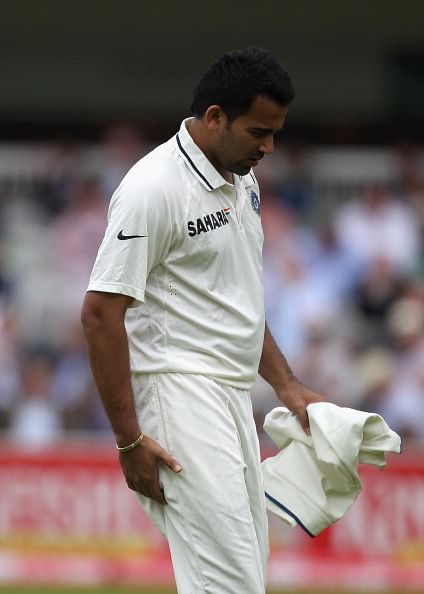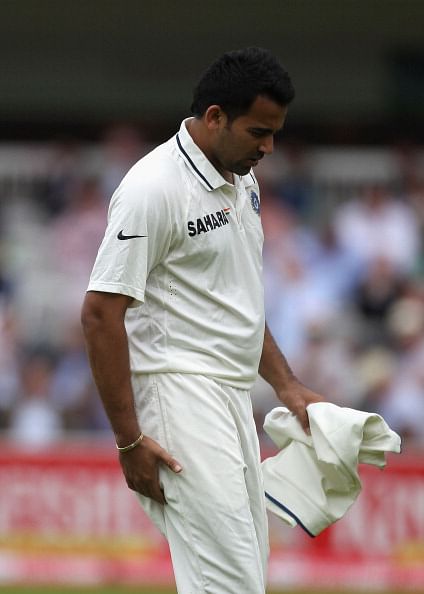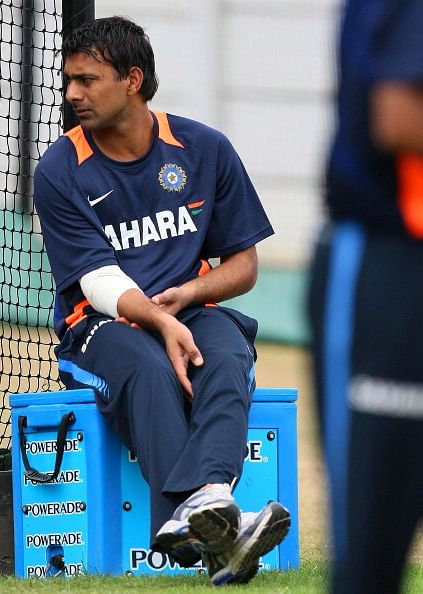
Indian Bowling Conundrum – Flat Pitches, Seaming Policies
They say, in Tests, batsmen save matches and bowlers win it for you. In ODIs and T20s though, it is the bowlers who deliver the goods, even if you are playing on national highways, like the one laid out for the first England India ODI at Rajkot. Harsha Bhogle, during the course of the match, beautifully emphasized on how we need fast bowlers, who can turn up consistently for the team over a longer period, say 5 to 7 years at least. Right now we are investing in bowlers and then losing them far too easily. None of the fast bowlers from the World Cup winning team are around at the moment. Zaheer has been axed. Sreesanth is still recovering from a toe surgery. Munaf Patel, one of India’s shining stars in the 2011 World Cup campaign, has almost slipped off the selectors’ radar. Ashish Nehra has had a start-stop season with Delhi because of injuries that have plagued his career.

There have been at least a dozen bowlers tried out by the Indian team. Vinay Kumar, although not a sensational performer by any stretch of imagination, seemed to have cemented his place in the ODI team before succumbing to an injury. Varun Aaron, who played against West Indies during their tour to India, has suffered an untimely back injury. Umesh Yadav, who has had an impressive start to his Test and ODI careers, is out of action due to a lower back injury. Praveen Kumar, training at the NCA, is recovering from a tennis elbow injury. Abhimanyu Mithun, once touted as an impressive speedster before drastically losing pace, has been on the sidelines for a long time. Ishant Sharma, brought back solely for his experience, has been very inconsistent, especially in the end overs. Irfan Pathan, for a few months last year, provided an excellent answer to India’s search for a fast bowling all-rounder, keeping in mind the World Cup down under in 2015. However, he was nursing a knee injury, delaying his return to the team.
Any ardent fan of the Indian cricket team would have two questions that haven’t been answered to any level of satisfaction by the team management or BCCI. One would wonder what is it that leads to so many injuries to young fast bowlers, especially when they have hardly played more than couple of dozen matches in a year. Secondly, it is worth pondering what the BCCI think tank does when it comes to managing the careers of young fast bowlers once they have been taken under the wing.
Across the country, old stadia have received a facelift while glitzy new stadia with lush green outfields and impressive stands keep coming up every month. But one wonders if players receive the same attention, especially once they are out of action. It is almost frustrating to witness countries like Pakistan, Australia, England and South Africa grow an abundant crop of talented fast bowlers, rotating out of form or injury prone bowlers at will. We have seen how Mitchell Johnson, who at one time was the very stigma of inconsistency, has come back so strongly, in the face of competition from young bowlers like Pattinson, Starc and Cummins. BCCI doesn’t lag in terms of finances. It is befuddling why a country of billion people, with such a diverse population, doesn’t produce great pacers with ease. Even more baffling is the kind of pitches that continue to be laid out for Ranji Trophy matches, the case in point being the recent spate of results that have been decided purely based on first innings’ scores. Dhoni displayed his ample sense of humor by commenting on how the new two bouncers per over rule is of no good to Indian fast bowlers who hardly use even one bouncer per over.

For years, the silliest of arguments that have been doing the rounds is that we are a batting country. But are we producing enough batting greats to replace the Fab Four? I doubt it. Spinners too, with the recent ineffectiveness of Ashwin, have become a worry. Ojha surprisingly doesn’t get a longer run in the shorter formats even though he has been consistently outperforming the likes of Piyush Chawla. It was agonizing to see England’s Tredwell proving far more effective than India’s spinners in the first ODI. Men sometimes need to pull themselves out of a denial-mode before they learn to pick themselves up from a rut. Ruling that, this sense of denial and turning up with a myriad excuses every single time almost unabashedly is the biggest problem, would be too naïve. Cricket at the end of the day is as much about technicality and strategizing as it is about heart and emotions, if not more. Do we not have the finances to have more setups like NCA across the country? Can we not afford to hire physiotherapists and fitness experts to look after a pool of at least 25 fast bowlers playing across the country round the year? Can we not pay talented fast bowlers like Umesh Yadav enough to protect them from the lure and risk of Twenty20 cricket? Are our selectors foresighted enough to pick at least a dozen fast bowlers who wouldn’t be allowed to slip or fade away and can support a decent batting line-up when we defend our World Cup in 2015? It is interesting to note that even a relatively inexperienced batsman like Rohit Sharma, who is yet to prove himself on the international scene, has played more ODIs than bowlers like Praveen Kumar, Vinay Kumar, Ishant Sharma, Munaf Patel or Sreesanth. If bowlers go through a lot of stress, does it not indirectly point out to a major lapse in our cricketing infrastructure, when we have so many batting choices and so few bowling choices? It is a bizarre trend, bowlers losing pace, then zip and finally the zeal to do well at the international scene before strange injuries take over and nip their careers in the bud.
The new team of selectors has taken some tough decisions in their short tenure so far. But one waits to see if they are not merely puppets of BCCI’s top brass and have what it takes to create a team that can compete, if not win, at the World Cup down under in 2015. If a team, that was going through absolute turmoil only couple of years ago and still doesn’t get to play home matches, could defeat us so comprehensively in our home conditions, I am worried if we are heading towards a major embarrassment in 2015 in apparently alien conditions. Unless our think tank throws away the gaudy cloak of financial fiefdom to first admit and then correct the error prone system, it would be hard for Indian cricket to maintain its identity as anything more than a street bully with powerful backing. At this juncture, the policies that govern cricket in this nation are unpredictable, like green-top landmines, while the pitches which could do with that spice lie there, placid like cement. And ‘cement’ is a major problem if you know what I mean.